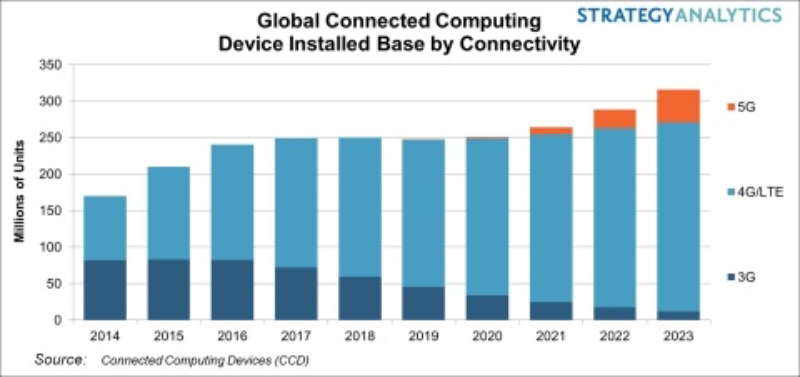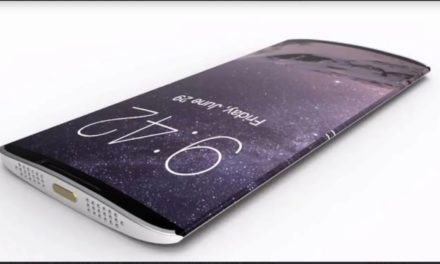The outlook for 5G services is strengthened today by new research from Strategy Analytics showing that 45 million PCs and tablets globally will incorporate 5G connectivity by 2023.
According to the research group, the 5G era will provide mobile operators a fresh chance to communicate the advantages and new use cases of high-speed cellular connectivity with consumers, a much needed conversation to bring more devices onto these more efficient networks and to make good on the massive 5G investment. Mobile operators will also have a chance to reevaluate their pricing and data plans with consumers to make a better case for 5G service on a multitude of devices beyond the smartphone.
The report’s forecasts also indicate that:
° The majority of 5G computing devices will be tablets and detachable 2-in-1s.
° Asia-Pacific will account for more than 40% of 5G devices in use, North America 29% and Western Europe 21% (2023 projections).
° Global annual sales of 5G computing devices will grow at a compound annual growth rates of 216% between 2019 and 2023.
“Intel, Qualcomm, Arm, Microsoft, and a handful of PC OEMs are developing new designs in light of a younger generation that will expect (and pay for) a more smartphone-like experience on their notebooks,” says Eric Smith, director, Connected Computing Devices. “This development will happen at the same time that 5G becomes a reality over the next decade, opening a new world of possibilities for vendors and carriers alike.”
David Mercer, principal analyst and vice Ppresident, Digital Consumer Practice adds: “At the same time, vendors, carriers, and retailers must establish a clear view into how consumers choose cellular plans. Consumers have a difficult time understanding why they should pay their carriers $10 a month just for the privilege of having cellular connectivity outside the house when they would rather grin and bear spotty, insecure Wi-Fi at specific locations. What form new pricing plans take in the 5G world must be informed by a holistic view of the consumer, which devices they use where, and what they use them for.”




